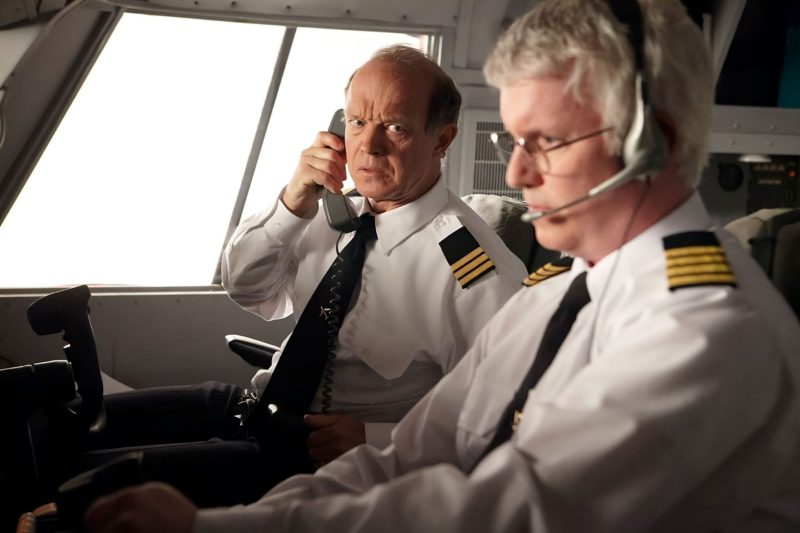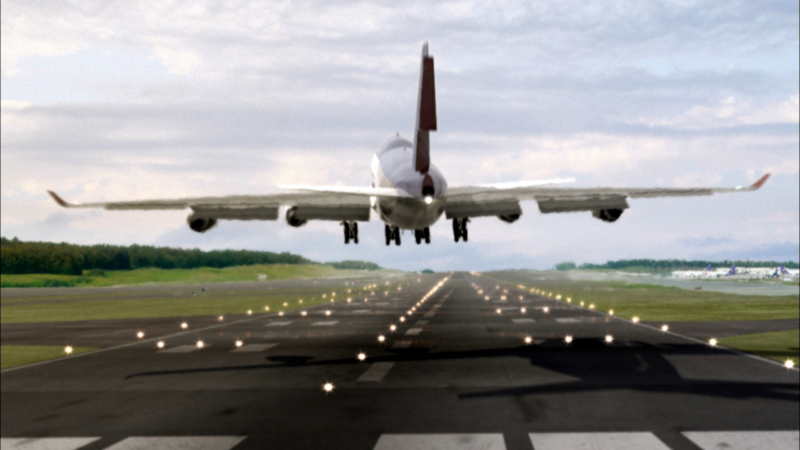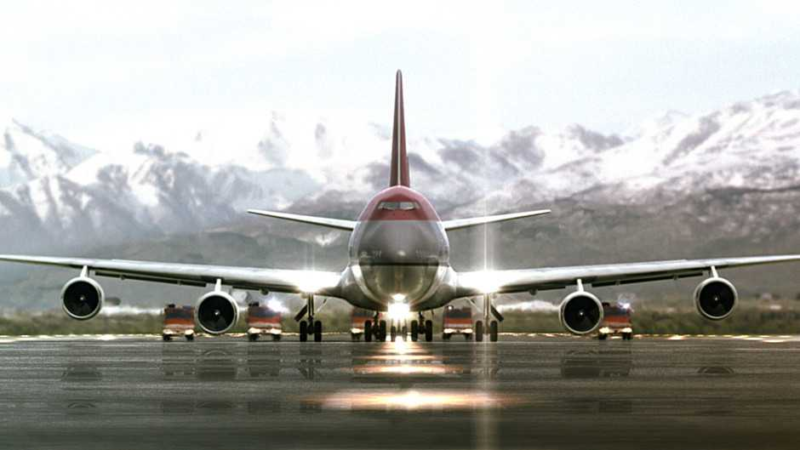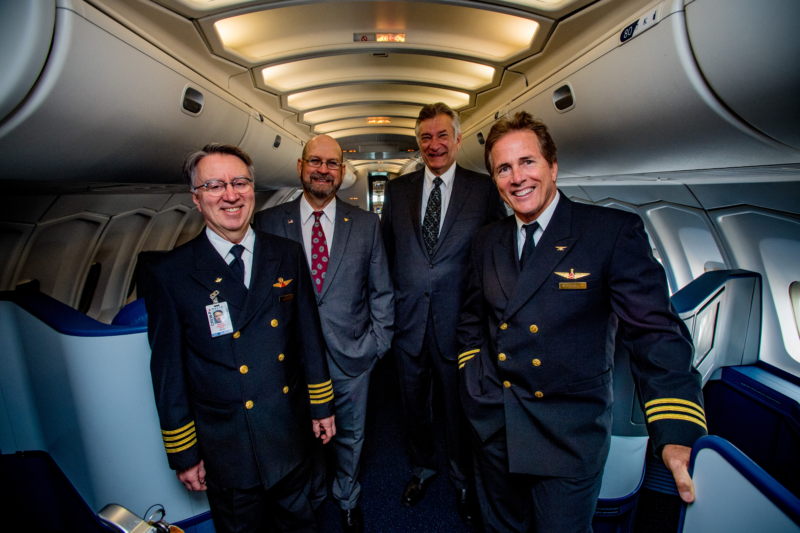On October 9, 2002, at about 17:40 Alaska Daylight time, a Northwest Airlines plane experienced a lower rudder hardover event. The pilots used the full right upper rudder and right aileron to maintain altitude and course after the left lower rudder deviated to its blowdown limit.
Thanks to the two rudders that were independently supported and operated, all was well. The pilots wouldn't have had enough authority to keep the plane upright if this had been a single rudder. It is one of the few Boeing commercial jetliners that have split rudders.
Northwest Flight 35 was performing from Detroit Metropolitan Wayne County Airport in the United States to Japan with 386 passengers and 18 crew members on board. The prototype plane was built for flight testing and is called NPW401. Northwest Airlines was the launch customer for the jumbo jet.
The plane rolled into a left bank while cruising at FL350. Captain Geib thought that an engine failure had caused the aircraft to fall down. Senior Captain John Hanson and First Officer David Smith were allowed to rest after Captain Frank Geib and First Officer Mike Fagan took control of the plane. Senior Captain Hanson felt that something wasn't right when he saw the aircraft perform an odd maneuver. The emergency crew call came from the cockpit as the captain became more interested. They are able to ring the chime. When the chime goes off we need you in the cockpit. Hanson reentered the cockpit and saw the captain put both of the rudders out to the right.
“The lower rudder had gone unexplainedly and quite suddenly out to the left. It was normally limited by the aircraft to six degrees of rudder throw at altitude, and the rudder had gone from zero to almost eighteen degrees in less than one second.”
Captain John Hanson

Captain Hanson snapped the autopilot off after he realized that the autopilot wasn't going to handle the situation. The cockpit crew took the cockpit operating manual which is a red manual designed to cover all of the emergencies that the crew might encounter. The situation in flight 85 wasn't in the manual
After declaring an emergency, the crew diverted to Alaska. The plane was in a communication dead zone when the crew declared an emergency. Unable to declare an emergency while flying over the Bering Sea, the crew contacted another Northwest Airlines flight which helped them declare the emergency as it was close to Alaska.
They got into a conference call with the Northwest Airlines team even though the quality wasn't great. Paul could be heard on the radio. No one could suggest a way to get the rudder back. Adding more speed to the final was suggested by the training manager.
Captain Hanson thought and decided to take control of the plane.
If someone is going to scratch my plane, I want it to be me. I told Frank that he did a great job with the initial recovery but that I was going to get back in the seat. Captain John Hanson said that Frank had no problem with that.
The crew decided to meet the cabin crew after declaring an emergency. The purser, the lead flight attendant and the interpreter were invited to a meeting by the crew. The passengers were told about the problem by the crew. The crew used different upper rudders, ailerons, and differential thrust to keep the plane in the air for an hour and a half.
The emergency landing was performed on the runway 6R. If you get down close to the runway and decide it doesn't look good, you're heading right at a mountain range. Only a short distance off the end of the runway.
The answer was to do it correctly the first time. "Don't go around." said Captain Hanson.

The plane was lined up on the runway using asymmetric engine thrust. They added power on the left side and pulled back engine power on the right side. It countered the rudder's movement.
As he could, Captain Hanson put the aircraft right on the touchdown spot, lowered the nose to the runway, and tried to make a smooth landing. After letting go of the wheel, he said, "Mike, you got it."
The plane went to the left at the landing. The pilots used the right brakes to stop the plane. They flew over the runway threshold at 185 knots, which is 30 knots faster than a typical B-747 landing. The aircraft was still trying to make a turn so they set the brakes at a very high setting. The plane went all the way down until the rudder stopped working.

The wheels and brakes at Ted Stevens International Airport were all red. The pilots were told by the ground controller that all the wheels on the left side of the plane were red. They waited for the wheels to cool before taking them to the gate. The crew members were praised by the passengers for their airmanship as they exhaled and disembarked the plane. The crew inspected the tail after arriving at the gate and found that the lower rudder was still pointing to the left.
The crew of Flight 85 received the Superior Airmanship Award for landing a Boeing 747 with a hard over rudder. The Superior Airmanship Award is given to pilots.
The flight isn't over until you're at the gate with the parking brake set according to the president of the ALPA.
The broken forged aluminum housing of the lower rudder power control module allowed the damper yaw to travel beyond its normal position. This resulted in a full left command input to the main control valve. The flight data recorder had an uncommanded lower rudder that shifted to the left. After the approach and landing, the aircraft's deflection increased to a full 32 degrees for the rest of the flight.
The captain told the investigator that he and the first officer ran through the available emergency procedures, but they couldn't fix the problem. The lower rudder moved to the left as the air speed decreased. The crew used differential power to help control the plane.
Captain Hanson said that this was a classic application of Crew Resource Management. We were fortunate to have full crew augmentation. Four pilots were working in the cockpit. There is at least a solid chance that you will have to leave the plane because we briefed it as a red emergency. We didn't know if we would be able to keep the plane on the runway.
The program is worth ten times what it costs. The CIRP program is important to pilots who have less successful outcomes.

The training department at Northwest gave F/O Fagan great training.
F/O Dave Smith said he would like to thank all the representatives for their dedication and sacrifice.
Boeing issued an alert service bulletin in July of 2003 that recommended operators to perform an inspection of the rudder power control modules.
The FAA published in the Federal Register on August 28, 2003 a Notice of Proposed Rule Making (NPRM), which would make this inspection mandatory on affected aircraft. There was a proposed replacement for this directive.
🎥 | 𝗔𝗶𝗿 𝗖𝗿𝗮𝘀𝗵 𝗜𝗻𝘃𝗲𝘀𝘁𝗶𝗴𝗮𝘁𝗶𝗼𝗻 Season 11, Episode 6: 'Turning Point'🎬 | 𝗔𝗹𝘁𝗲𝗿𝗻𝗮𝘁𝗲 𝗧𝗶𝘁𝗹𝗲: 'Deadly Design' (Nat Geo 🇬🇧)
📺 | 𝗙𝗶𝗿𝘀𝘁 𝗔𝗶𝗿𝗲𝗱: 29 December 2011 pic.twitter.com/fvm72gDlBB